To keep passengers and cargo safe during their travels on the Hudson River, mariners once relied on more than a dozen lighthouses alerting them to hazards that could doom a ship. Today, only seven of these historic beacons remain.
Fortunately, all of the remaining structures have been lovingly preserved and are open to the public. Some even continue shining their light. They provide a glimpse of the hardships endured by lighthouse keepers, many of whom were women, and their heroic efforts to save lives in perilous conditions.
On National Lighthouse Day (August 7) and beyond, enjoy a fact-filled upriver “journey” past these fascinating artifacts of the Hudson’s maritime heritage.
Jeffrey’s Hook Lighthouse
Year lighted: 1921
Reason constructed: To keep mariners off the dangerous rocks at Jeffrey’s Hook.
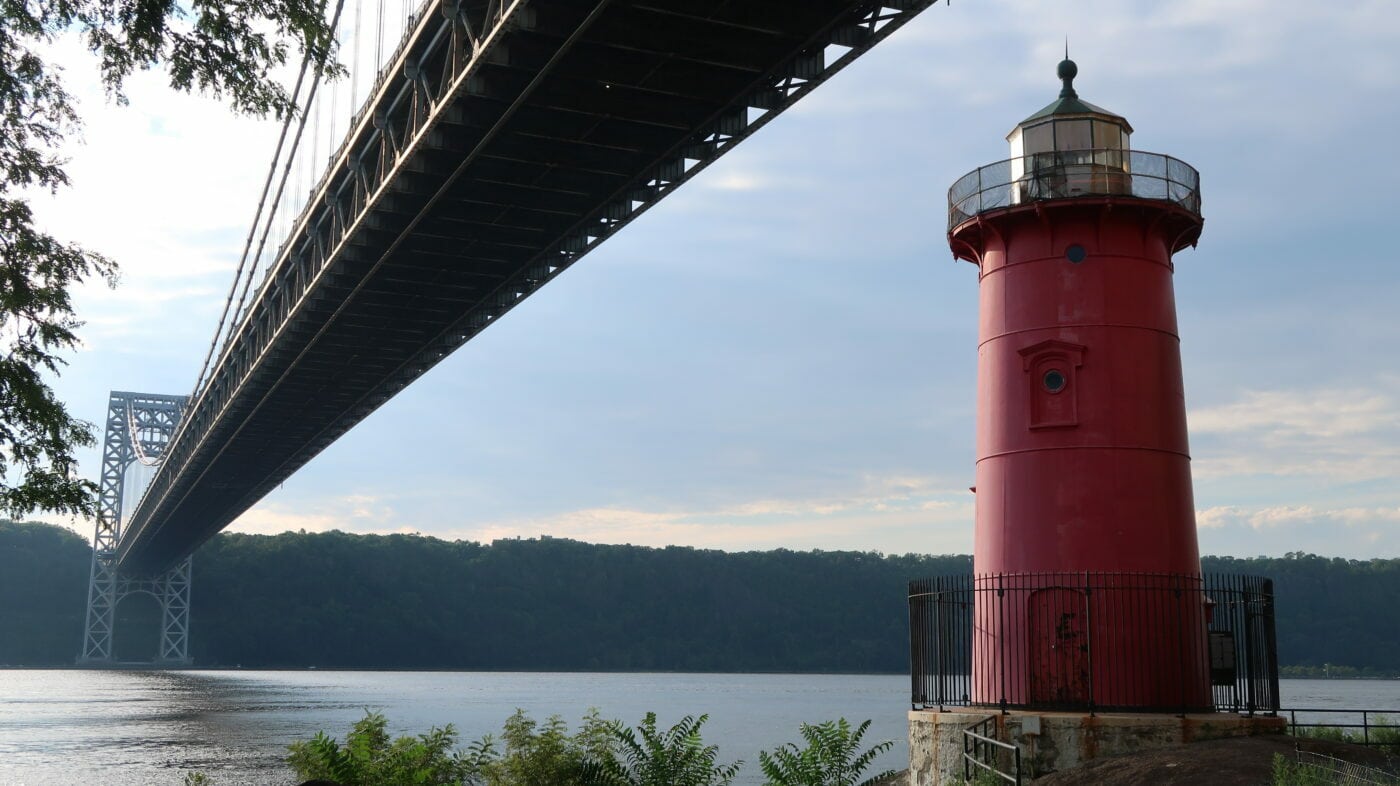
Why it’s special: The cast-iron light was located in Sandy Hook, New Jersey, from 1883-1917. When it was no longer needed there, it was moved to Jeffrey’s Hook. It became obsolete at this location upon construction of the George Washington Bridge and was decommissioned in 1948.
Why its legend endures: The popularity of Hildegarde Swift’s children’s book The Little Red Lighthouse and the Great Gray Bridge, published in 1942, spurred a campaign to save this beacon when the U.S. Coast Guard considered dismantling it. Thanks to the outpouring of support for the structure, largely from young people, ownership was transferred to New York City’s Parks Department in 1951. It is located in the city’s Fort Washington Park.
How to visit: The light is open occasionally. For info, contact the Urban Park Rangers at 212-360-1444.
Sleepy Hollow/Kingsland Point Lighthouse
Year lighted: 1883
Reason constructed: To warn ships of dangerous shoals off the river’s eastern shore.

Why it’s special: It’s the Hudson’s only “sparkplug” lighthouse (meaning the beacon and keepers’ quarters are in the same conical structure) made of cast iron and lined with brick. The five-story light was deactivated in 1961 when it became obsolete because of illumination from the Tappan Zee (now Governor Mario M. Cuomo) Bridge.
Notable rescues: Jacob Ackerman, who manned the light from 1883-1904, is credited with saving 19 lives, including four fishermen whose boat capsized in 1893.
Why its legend endures: The light once stood half a mile out in the river. Fill used to create space for a General Motors plant, now the site of the Edge-on-Hudson development, brought it within 100 feet of the shore. (A bridge connects it to the land.) Jacob Ackerman and his wife Henrietta kept chickens in one of the lighthouse’s bedrooms.
How to visit: Contact the Village of Sleepy Hollow Recreation & Parks Department for info.
Stony Point Lighthouse
Year lighted: 1826
Reason constructed: To signal the narrowing of the river above Haverstraw Bay and alert southbound mariners to the rocky peninsula, indistinguishable at night from the mountains behind it. The light met a need for navigational aids on the river after the 1825 opening of the Erie Canal, which caused a boom in shipping.
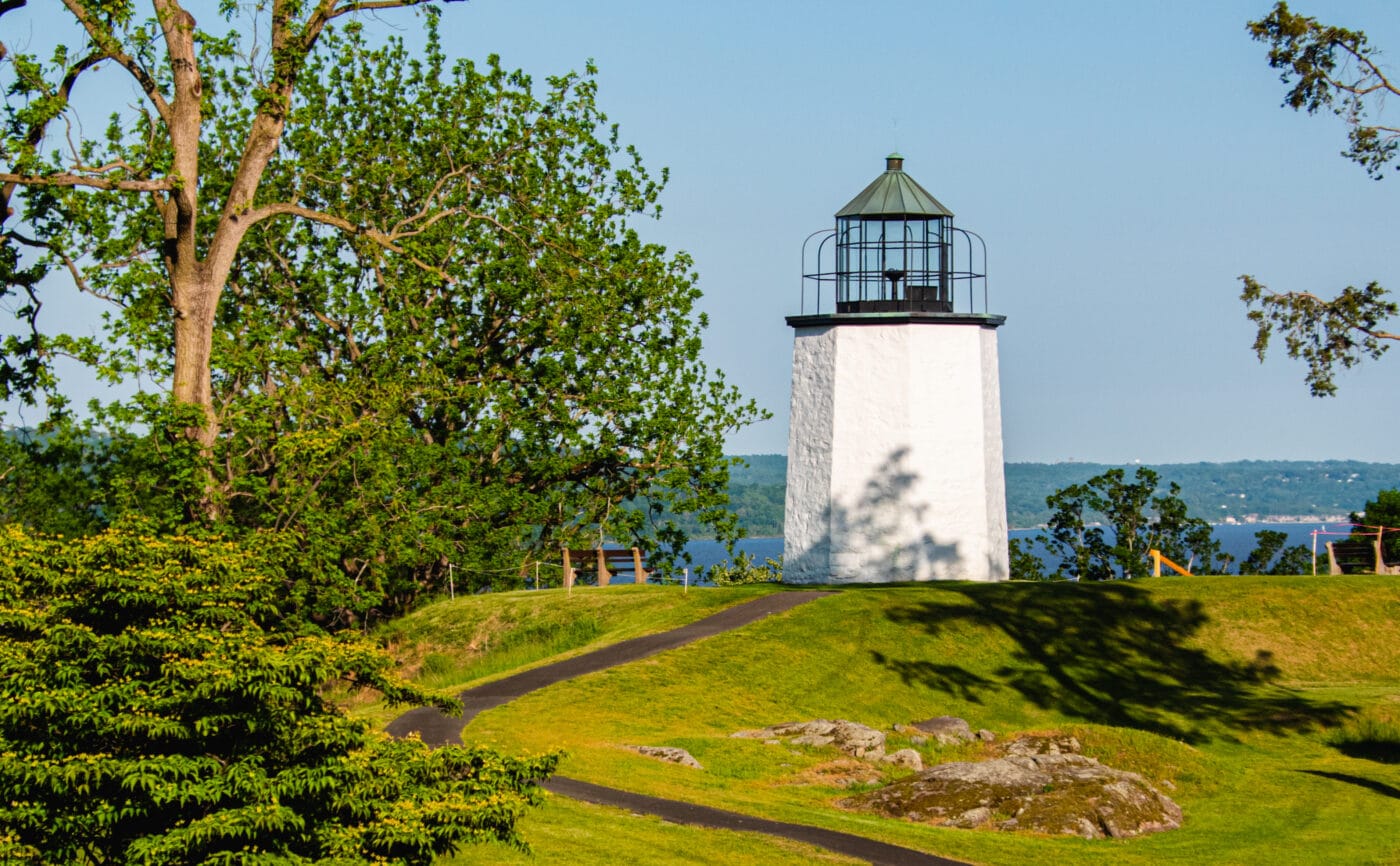
Why it’s special: Just 30 feet tall, the octagonal stone structure sits 150 feet above the river. Designed by Thomas Phillips, superintendent of lighthouses for the U.S. Treasury Department, the light was decommissioned in 1925 and replaced with a light tower closer to the water. It remained dark until being reactivated with an automatic light in 1973.
Notable rescues: The only wreck at Stony Point occurred in 1901, when the steamship Poughkeepsie ran aground. All people aboard were brought safely ashore immediately. However, horses in the hold remained in the water for four days before being led to land.
Why its legend endures: Nancy Rose, the lighthouse’s longest-serving keeper, succeeded her husband upon his death in 1857 and maintained the beacon until 1903. One of her duties was winding the mechanism that kept a bell ringing during dense fog. When the mechanism occasionally failed, Rose had to ring the bell by hand, using a sledgehammer — once reportedly for 56 hours straight.
How to visit The light is on the grounds of the Stony Point Battlefield State Historic Site.
Esopus Meadows Lighthouse
Year lighted: 1872
Reason constructed: To prevent ships from straying into the “meadows” — the large tidal flats, often covered with vegetation, along the river’s western shoreline. (Cows used to graze there at low tide.)
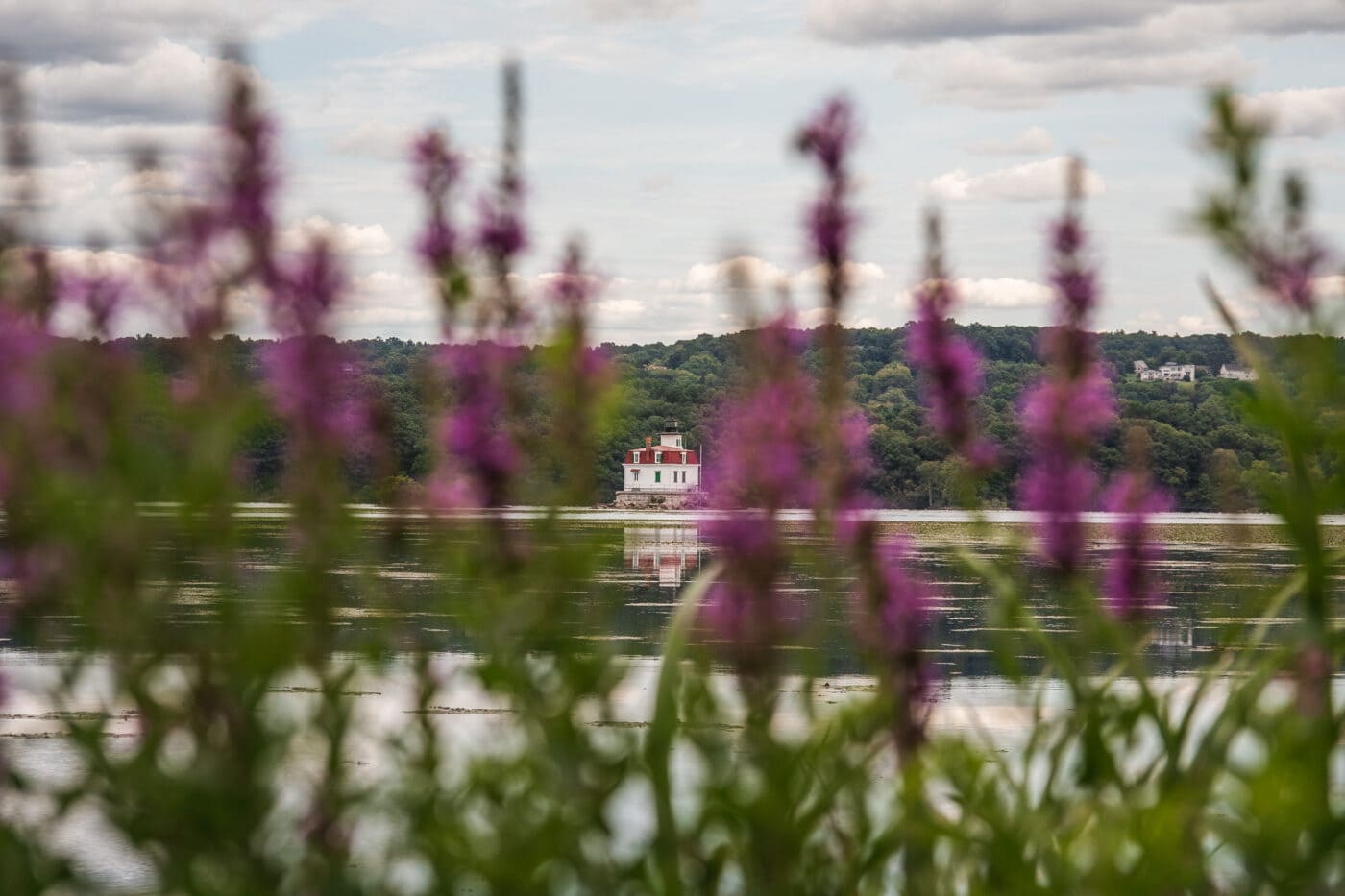
Why it’s special: Dubbed the “Maid of the Meadows,” it’s the Hudson’s only wooden lighthouse and arguably its most picturesque. Ironically, it replaced an earlier stone structure deemed “unfit for occupancy” because of damage from flood tides and ice floes. It’s also one of only two Hudson lighthouses located in the middle of the river (Hudson-Athens is the other).
Why its legend endures: Keepers continued living in the building until 1965, when the light was replaced with a solar-powered system. John Kerr, who tended the light from 1944 to 1959, shared the structure with an unusual menagerie of pets, including a couple of de-odorized skunks and a rooster that always accompanied him to shore.
How to visit: Trips to the lighthouse on the solar-powered boat Solaris leave from the Hudson River Maritime Museum.
Rondout Lighthouse
Year lighted: 1915
Reason constructed: To guide mariners into Rondout Creek, once a thriving port for ships.
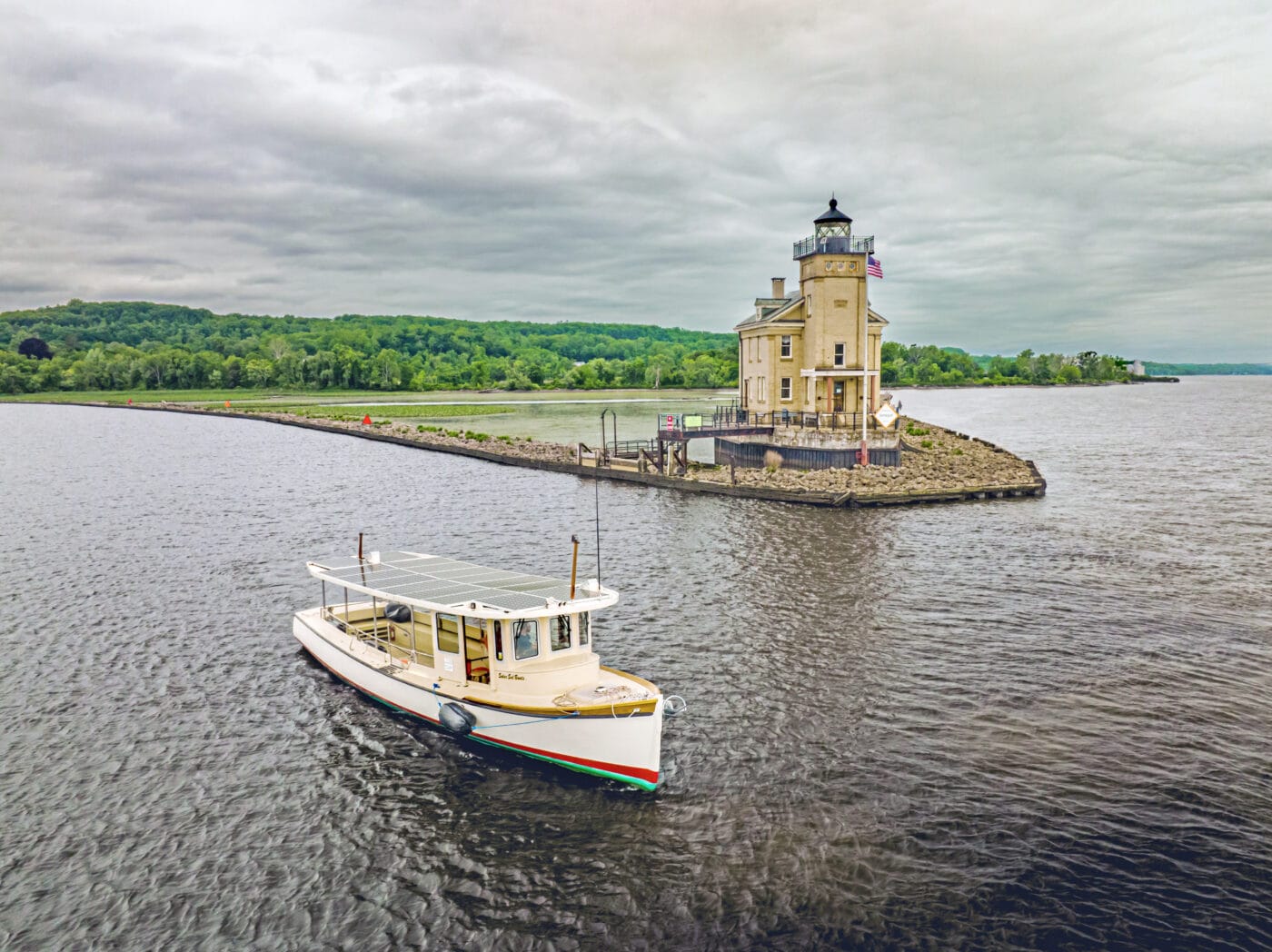
Why it’s special: The light remains operational (it was automated in 1954), but the brick building is owned by the City of Kingston.
Why its legend endures: The lighthouse may be haunted. According to the legend of the “Widow’s Watch,” each autumn a bride whose husband drowned in a boating accident on their wedding night roams through the structure, searching for her spouse.
How to visit: Trips to the lighthouse on the solar-powered boat Solaris leave from the Hudson River Maritime Museum.
Saugerties Lighthouse
Year lighted: 1869
Reason constructed: To keep ships entering busy Esopus Creek off of the shallows at its mouth.
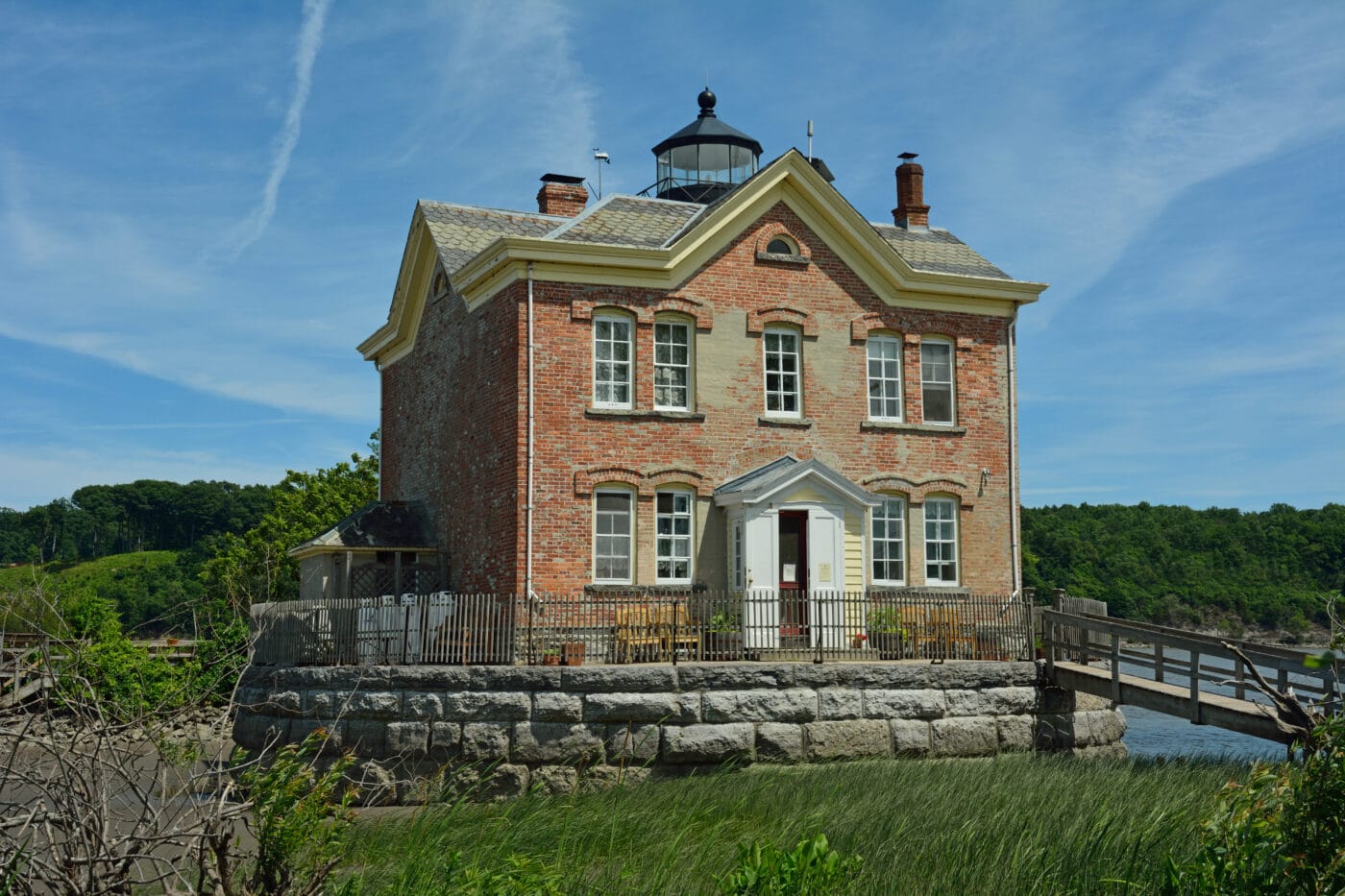
Why it’s special: Two previous lights here had been destroyed, one consumed by fire, the other wrecked by ice floes. To ensure this one would last, its walls were built of brick 20 inches thick. The beacon was automated in 1954.
Notable rescues: Lighthouse keeper Kate Crowley and her sister Ellen are credited with saving a number of lives. This 1878 newspaper account describes their heroic mission to rescue sailors from an overturned sloop:
The waves ran so high, the gale blew so madly, the thunder roared so incessantly, and the lightning flashed in such blinding sheets, that it seemed impossible for the women ever to reach the men, to keep headway, or to keep from being swamped. But they never missed the opportunity of a rising billow to give them leverage and they managed by steady pulling to get ahead until they reached the men in the water.
Why its legend endures: It’s the only Hudson River lighthouse with a B&B, but you’ve got to plan ahead — rooms are reserved months in advance.
How to visit: A half-mile trail through the Ruth Reynolds Glunt Nature Preserve — named after the woman primarily responsible for saving the light from demolition — leads to the lighthouse, where tours are offered summer Sunday afternoons. Info on directions and hours is available here.
Hudson-Athens Lighthouse
Year lighted: 1874
Reason constructed: To warn ships away from Middle Ground Flats, first a shallow, dangerous sandbar, then an island created by dumping soils dredged from the river’s shipping channel.
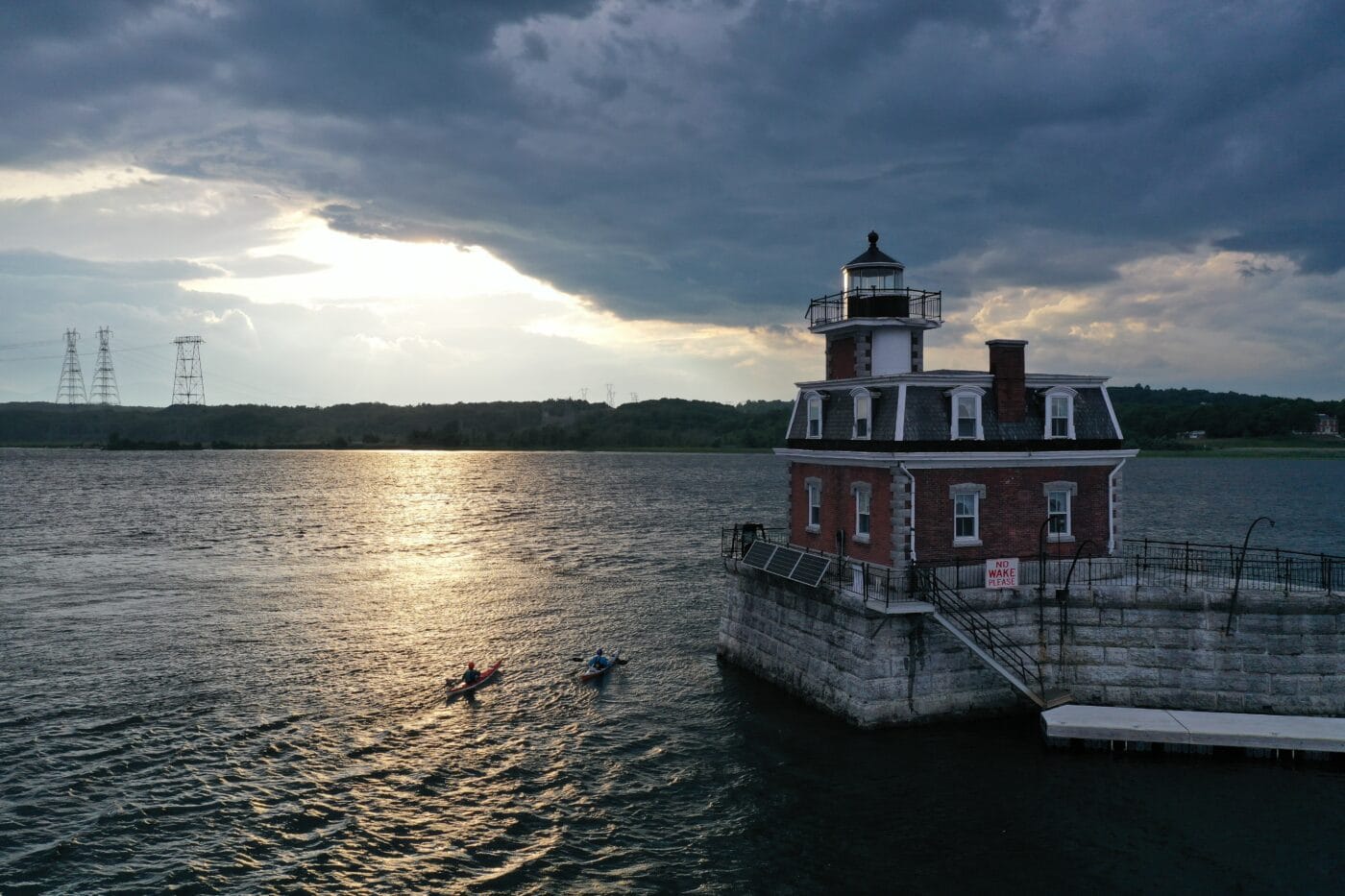
Why it’s special: The masterful use of brick and stone, combined with a Mansard roof, make this Victorian edifice the river’s most architecturally impressive beacon. Automated in 1949, it was the first federally owned lighthouse in the nation to be turned over to a non-profit group — the Hudson-Athens Lighthouse Preservation Society — for safekeeping.
Notable rescues: In 1912, lighthouse keeper Frank Best jumped into a rowboat and rescued 11 women from the steamship Isabella, which had collided with a tugboat. Six years later his daughter, Bertha Munn, saved a man and boy from drowning.
Why its legend endures: The lighthouse appeared on a 1946 cover of the Saturday Evening Post. An identical twin, the Stepping Stones Lighthouse, sits in Long Island Sound.
How to visit: Check with the Hudson-Athens Lighthouse Preservation Society for info on tours.
Reed Sparling is a staff writer and historian at Scenic Hudson. He is the former editor of Hudson Valley Magazine, and currently co-edits the Hudson River Valley Review, a scholarly journal published by the Hudson River Valley Institute at Marist College.